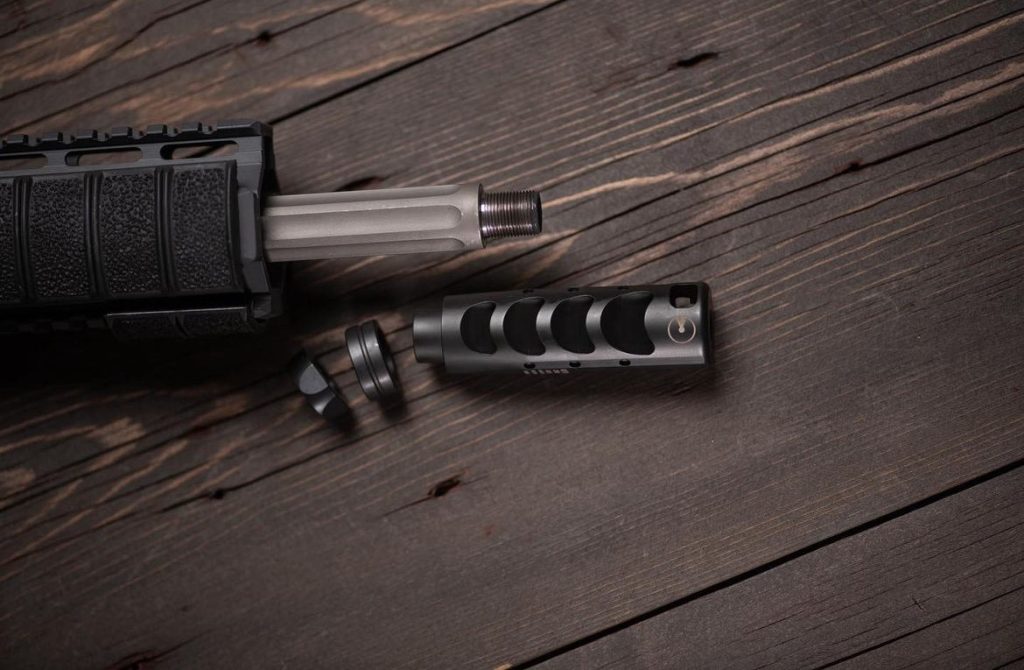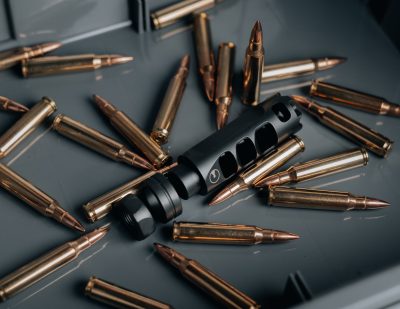Muzzle Brakes vs. Suppressors
When it comes to rifle performance and shooter comfort, two of the most talked-about attachments are muzzle brakes and suppressors. Both devices mount to the end of a barrel, but they serve very different purposes — one is solely focused on managing recoil and muzzle rise, while the other is designed to reduce sound. Understanding the difference can help shooters choose the right tool for their specific needs, whether for precision shooting, hunting, or tactical applications.
What Is a Muzzle Brake?
A muzzle brake is designed to redirect gases that exit the barrel when a round is fired. Instead of allowing that high-pressure gas to push straight out the front, the brake vents it through side ports or baffles. This redirection counters the backward force that causes recoil and muzzle rise.

Key Benefits:
- Reduced Recoil: By venting gases to the side or upward, a muzzle brake can significantly cut down on felt recoil, allowing for faster follow-up shots and greater control.
- Improved Accuracy: Less muzzle climb helps maintain sight picture and target alignment, especially useful in competitive shooting or long-range engagements.
- Lightweight & Simple: Muzzle brakes are compact and require minimal maintenance compared to other muzzle devices.
Considerations:
- Muzzle brakes can be loud — often amplifying the sound to those nearby since gases are vented sideways.
- They also increase blast, which may not be ideal in close-quarters or hunting scenarios.
What Is a Suppressor?
A suppressor (commonly referred to as a “silencer”) is engineered to reduce the noise and flash produced when firing a round. It works by trapping and slowing the expanding gases that follow the bullet out of the barrel. Contrary to what Hollywood portrays, a suppressor doesn’t make a rifle “silent” — but it does make shooting far more comfortable and discreet.

Key Benefits:
- Sound Reduction: Suppressors can lower the sound signature of a gunshot by up to 20–35 decibels, depending on caliber and ammunition.
- Reduced Muzzle Flash: This helps maintain low-light visibility and reduces shooter signature.
- Improved Shooter Comfort: Less noise and concussion mean reduced fatigue and easier communication on the range or in the field.
Considerations:
- Suppressors are heavier and longer than muzzle brakes, which can slightly affect rifle balance.
- In the U.S., suppressors are regulated under the National Firearms Act (NFA), requiring additional paperwork and wait time for legal ownership.
Which One Should You Choose?
Your choice depends on what matters most in your shooting experience:
| Need | Best Option |
|---|---|
| Maximum recoil control | Muzzle Brake |
| Reduced sound & flash | Suppressor |
| Faster target reacquisition | Muzzle Brake |
| Comfortable, quieter shooting | Suppressor |
| Compliance simplicity | Muzzle Brake (no federal paperwork) |
Final Thoughts
Both muzzle brakes and suppressors enhance rifle performance — just in different ways. A muzzle brake is ideal for controlling recoil and improving precision, while a suppressor offers a quieter, smoother shooting experience with reduced flash and concussion.
Whether you’re tuning your rifle for competition, tactical use, or just more enjoyable range days, understanding how each device works ensures you get the performance you’re aiming for.

Related Products:
